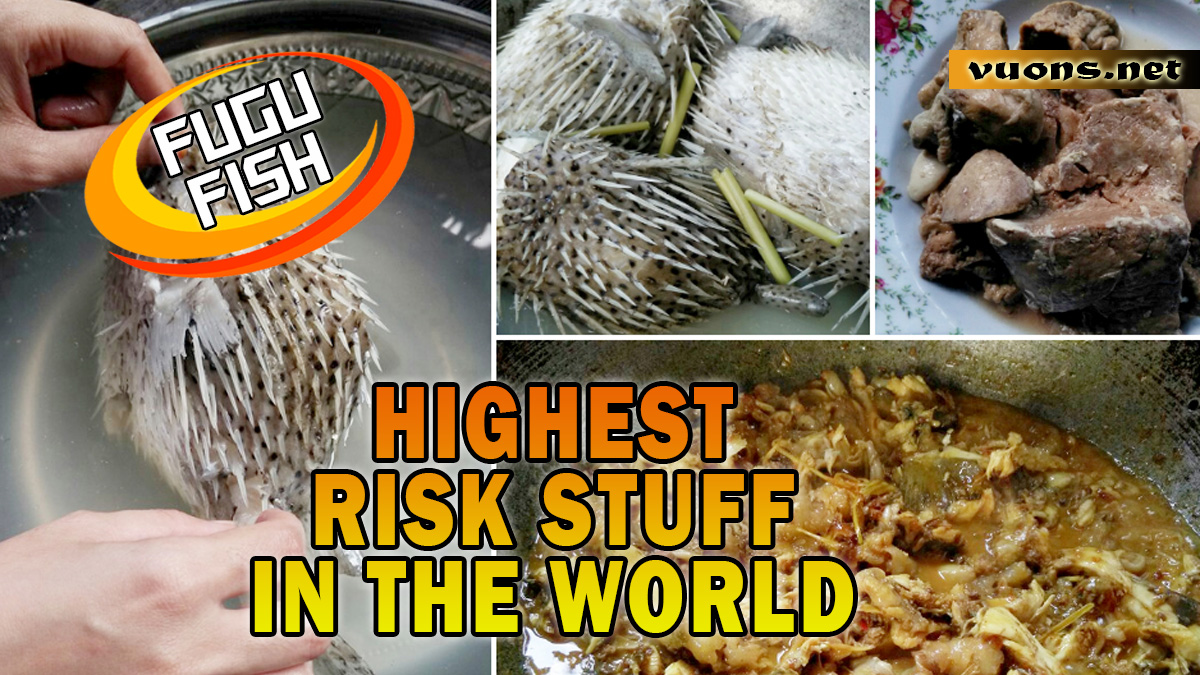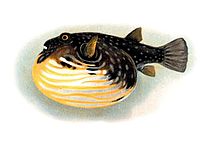Pufferfish: A High Risk Dish in the Culinary World
History and Popularity of Pufferfish in Japan
Pufferfish, or what is known as fugu in Japan, has a long and popular history in the Japanese Culinary world. This uniqueness and the risks that come with it make this fish one of the most exclusive and dangerous foods.
The history and popularity of pufferfish in Japan dates back to the Edo period (1603-1868), when samurai first realized the deliciousness of this fish’s flesh. However, they also discovered that some parts of the pufferfish contained tetrodotoxin, a deadly poison that has no antidote. During this period, consumption of pufferfish was banned by the government due to the large number of poisoning cases. Despite this, its popularity never really waned. Pufferfish continued to be served in secret, especially among aristocrats and high society who were looking for a different culinary sensation.
Today, puffer fish is an internationally recognized luxury dish. Its popularity is not only in Japan but has also spread to other countries. Chefs who wish to serve fugu must undergo special training and obtain a license to ensure that they can prepare this fish safely. The most toxic parts, such as the liver and ovaries, must be removed carefully to prevent contamination.
For many people, eating pufferfish is a thrilling yet mouth-watering culinary experience. Those who have tasted it often talk about the unique taste and texture, as well as the adrenaline rush of knowing the risks involved. Nevertheless, puffer fish remains a symbol of culinary skill and courage for those who dare to try it.
The history and popularity of puffer fish in Japan shows how culture and tradition can influence culinary preferences. Despite the obvious risks, the appeal of pufferfish continues to endure, making it one of the world’s most amazing dishes.
Tetrodotoxin Poison Content in Pufferfish
Pufferfish, or fugu, is known as one of the most dangerous foods in the world because of the tetrodotoxin poison it contains. This poison is one of the most deadly substances known to man, and pufferfish contain enough tetrodotoxin to kill several adults.
Tetrodotoxin is a powerful neurotoxin that works by blocking sodium channels in nerves, causing paralysis and even death within a short time. This toxin is found in various parts of the pufferfish’s body, including the liver, ovaries, skin, and sometimes the flesh. The lethal dose of tetrodotoxin is very small, only about 2 mg is enough to cause death in humans.
The peculiarity of tetrodotoxin is that there is no effective antidote. Treatment for tetrodotoxin poisoning is largely supportive, such as ensuring that respiratory function and blood circulation continue until the toxin is naturally removed from the body. Symptoms of tetrodotoxin poisoning can appear within 20 minutes to several hours after ingestion, including dizziness, numbness, vomiting, and difficulty breathing. If not treated quickly, this poisoning can be fatal.
In Japan, the serving of pufferfish is strictly regulated. Chefs who want to serve fugu must undergo intensive training and obtain a special license. They are trained to dispose of parts containing tetrodotoxin very carefully to prevent contamination. Despite this, cases of poisoning still occur, although rarely, due to errors in preparation.
The toxic tetrodotoxin content in pufferfish is the main reason why this fish is considered a high-risk dish. However, for many people, the thrill of eating fugu, knowing the risks involved, adds to the attraction and unique culinary experience. Tetrodotoxin, although deadly, has become an integral part of fugu’s appeal in the culinary world.
Cases of Pufferfish Poisoning in the World
Pufferfish, or fugu, is one of the most dangerous foods in the world because it contains the deadly poison tetrodotoxin. Cases of pufferfish poisoning in the world often make headlines because of their high severity. Tetrodotoxin, contained in certain parts of pufferfish such as the liver, ovaries and skin, can cause paralysis, respiratory problems and even death within hours.
Cases of puffer fish poisoning usually occur due to errors in preparation and processing. In Japan, where puffer fish is most commonly consumed, chefs who want to serve fugu must undergo rigorous training and obtain a special license. Despite this, poisoning incidents still occur, either due to negligence or consumption of wild pufferfish that are not prepared by licensed chefs.
One famous case occurred in 1975, when the famous Japanese actor, Bando Mitsugoro VIII, died after eating the liver of a puffer fish, which is the most poisonous part. Even though he had been warned about the dangers, Bando continued to consume the liver because he was confident in his tolerance. This case highlights how dangerous it is to consume pufferfish that are not properly processed.
Outside Japan, cases of pufferfish poisoning have also occurred in countries such as Thailand and the Philippines, where some incidents involved tourists trying fugu without fully understanding the risks. In Thailand, in 2009, there were a number of cases of poisoning due to consumption of pufferfish which were sold illegally as snowfish.
Efforts to reduce cases of puffer fish poisoning in the world continue to be made, including through strict regulations, consumer education and chef training. However, risks remain, and it is important for anyone who wants to try fugu to ensure that the fish is prepared by a licensed chef and in a trusted place. Cases of pufferfish poisoning remind us of the importance of caution in consuming this high-risk food.
Experience of Eating Pufferfish: Between Deliciousness and Danger
Eating pufferfish, or fugu, is a unique and thrilling culinary experience, combining deliciousness with high risk. Fugu is known for its delicious flesh, but also for its tetrodotoxin poison which is deadly if not prepared properly. The experience of eating pufferfish always contains an element of adrenaline, as every bite can be potentially dangerous.
In Japan, fugu is often served as sashimi, thin slices of fish meat arranged artistically. The chewy texture of the meat and mild taste make fugu a very enjoyable dish. However, to enjoy this delicacy, consumers must entrust their lives to specially licensed chefs. These chefs undergo intensive training to learn how to prepare fugu safely, removing parts that contain the poison tetrodotoxin.
The experience of eating puffer fish also includes deep cultural aspects. In Japan, eating fugu is often considered a symbol of courage and social status. Restaurants that serve fugu usually have a high reputation, and the dish is often enjoyed by culinary enthusiasts looking for a different sensation.
Despite the deliciousness on offer, danger still lurks. Every year, there are reports of fugu poisoning, although the numbers are relatively small compared to the amount of consumption. These cases generally occur because the pufferfish was not prepared by a licensed chef or because the poisonous parts were not completely removed.
For many people, the experience of eating pufferfish is the pinnacle of a culinary adventure. The sensation of enjoying something delicious while knowing the risks involved creates a mix of fear and pleasure rarely found in other dishes. However, it is important for anyone who wants to try fugu to ensure that the fish is prepared by a licensed chef and at a reputable restaurant. The experience of consuming pufferfish is a perfect blend of deliciousness and danger, offering an unforgettable culinary sensation.




